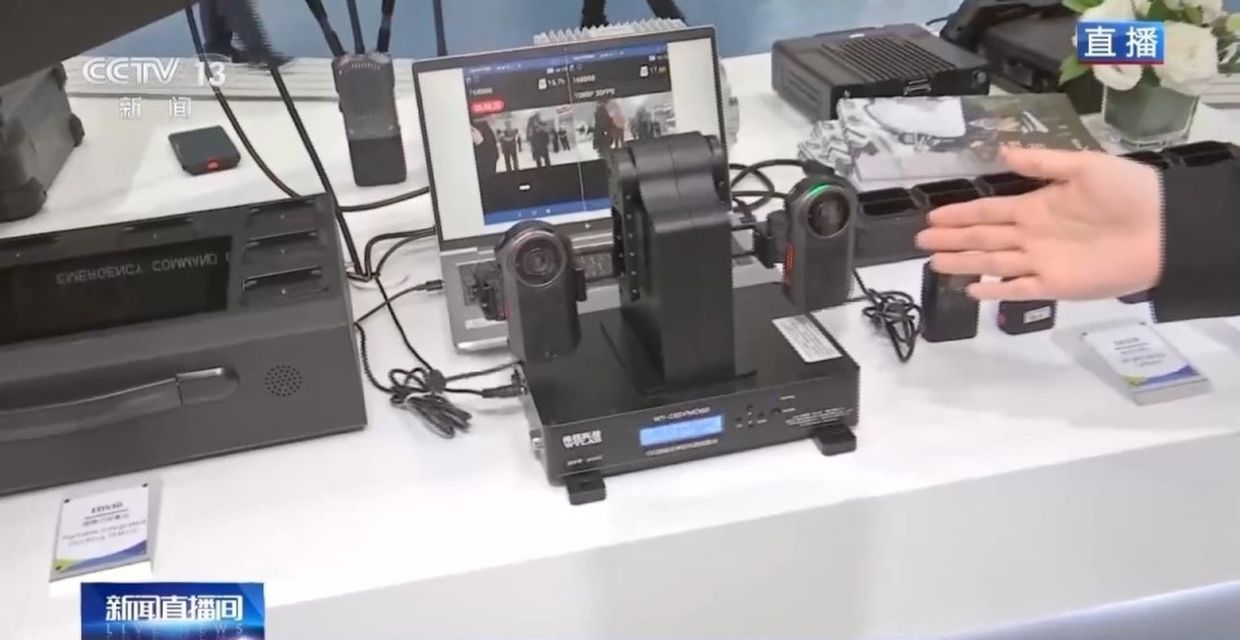AI-Driven Tech Expansion Redefines Global Landscape: From Public Safety to Intelligent Networks and Mobility
Author: TechDesk Global

Across nearly every corner of modern technology, 2025 is unfolding a familiar paradox: AI-driven systems promise unprecedented efficiency, but their rapid deployment raises questions about privacy, security, and governance. The global tech press this year paints a picture of intelligence stitching together public-safety devices, enterprise networks, supply chains, and consumer devices. As organizations scale AI from pilots to production, the risk surface expands—from data handling and model risk to vendor dependence and regulatory compliance. The story is not simply about better algorithms; it is about the social and economic choices that determine how and where AI is deployed, and who bears responsibility for outcomes.

Public-safety AI tech on display at a Chinese police technology exhibition, illustrating the global diffusion of AI-enabled surveillance devices.
A particularly visible thread runs through the public-safety arena. The Star Online reports on China’s exhibition of AI-assisted facial-recognition surveillance devices aimed at police forces in developing countries. Markets pitched as tools for faster identification and enhanced situational awareness raise urgent questions about civil liberties, data sovereignty, and oversight. As policymakers and buyers weigh the benefits against risks—privacy invasion, potential misuse, and the diffusion of advanced surveillance capabilities—the episode underscores a broader trend: AI-powered tools are leaving domestic borders as exporters seek new growth via international markets. The implications extend beyond crime-fighting to diplomacy, human rights, and the global governance of biometric technologies.
Beyond public safety, another front is the modern supply chain, where vendor visibility gaps threaten resilience. A report from Supply Chain Brain notes that nearly half of organizations still lack basic visibility into their security posture. When suppliers, contractors, and service providers operate in a rapidly digitizing ecosystem, blind spots in third-party risk, data flows, and incident-response plans can translate into operational disruption, data breaches, or regulatory noncompliance. The result is a more fragile global network, where a single compromised vendor can cascade through procurement, manufacturing, and logistics. To address this, organizations are being urged to strengthen due diligence, implement continuous monitoring, and embed risk governance into sourcing decisions, contracts, and ongoing supplier relationships.
At academic and policy levels, 2025 has also seen concerted efforts to steer AI toward society-friendly outcomes. MIT’s Generative AI Impact Consortium Symposium brought researchers, industry leaders, and policymakers together to discuss how generative AI could reshape work, education, and governance. The conversation centered on responsible deployment, model risk management, data usage norms, and workforce transformation. The overarching message: progress will require cross-disciplinary collaboration that fuses computer science with ethics, law, economics, and management to craft practical standards for accountability, transparency, and inclusivity as AI pervades decision-making.

Huawei's Xinghe Intelligent Network concept showcased at Huawei Connect 2025, illustrating AI-centric networking.
A leading example of AI-infused networking comes from Huawei, whose Xinghe Intelligent Network was unveiled at Huawei Connect 2025. The solution is described as a three-layer architecture—AI-centric brain, AI-centric connectivity, and AI-centric devices—designed to accelerate the deep integration of AI with networks. Four core offerings—Xinghe AI Campus, Xinghe Intelligent WAN, Xinghe AI Fabric 2.0, and Xinghe AI Network Security—are meant to deliver deterministic latency, zero packet loss, and AI-powered security at scale. In security, Huawei combines on-device firewalls, an emulator for unknown threats, and 24/7 autonomous O&M to keep networks resilient. Wi-Fi sensing promises centimeter-level detection to verify human presence, while an industry-first spycam-detecting wireless access point aims to protect trade secrets in sensitive environments. Taken together, the architecture represents a vision in which AI is embedded across campus or enterprise networks, enabling faster deployment and smarter policy enforcement.

A modular data centre designed to speed AI-enabled workloads, enabling scalable capacity and flexibility.
The enterprise network market itself is evolving to support AI-driven workloads. Electronics Weekly reports a 13.2% year-over-year rise in the Q2 WLAN market, driven by the deployment of Wi‑Fi 6E and Wi‑Fi 7. This expansion underlines the demand for secure, high-throughput connectivity that can handle real-time analytics, large device populations, and AI-enabled applications across offices, campuses, and warehouses. For IT leaders, the message is clear: robust wireless infrastructure remains a foundational layer for intelligent operations, and vendors are delivering smarter software-defined networking, analytics, and security tools to manage growing traffic and interference.

iPhone 17 launch visuals highlighting a generation of AI-powered features and superior display technology.
On the consumer front, AI-enabled features are becoming increasingly central to device upgrades. The Times of India coverage of the iPhone 17 launch emphasizes 120Hz display across all models, a 48‑megapixel Fusion camera, and the A19 chip—markers of a premium, AI-savvy smartphone experience. With pricing starting around Rs 82,900 for the base model, Apple continues to fuse on-device AI processing with advanced imaging pipelines to deliver faster, more capable devices. The shift toward AI-enhanced photography, real-time translation, and intelligent assistants signals how mass-market products will increasingly shape user expectations and set benchmarks for the wider ecosystem.
Google Gemini embedded in Chrome, extending AI-powered browsing and productivity.
In software ecosystems, AI is becoming a pervasive helper in everyday tasks. The Hindu notes that Google has integrated Gemini into Chrome, extending AI-assisted browsing, translation, and task automation while navigating a complex antitrust landscape. For users, this translates into faster access to contextual insights, more intelligent autofill, and smarter interaction with web content. For regulators, it raises questions about competition, privacy, and the responsibilities of large platforms to manage data use and model behavior. The Chrome integration exemplifies the broader trend of AI moving from backend servers to client-facing experiences that shape how people search, learn, and work.
The mobility sector reflects a parallel shift toward AI-enhanced efficiency and sustainability. Times Now reports Hyundai’s plan to launch more than 18 hybrid models by 2030, including the first locally designed EV for India, supported by a localized supply chain. The strategy emphasizes affordability, region-specific products, and advanced battery technology as levers to accelerate the transition to electric mobility. AI and analytics underpin production planning, demand forecasting, and after-sales service optimization, helping automakers tailor offerings to varied markets while reducing costs and emissions. The regional focus also aligns with broader economic strategies to build domestic capability and resilient supply chains in a rapidly evolving energy economy.

Hyundai’s plan to roll out over 18 hybrids and India-first EV, supported by localized production.
The convergence of AI across these domains—surveillance, supply chains, networks, data centers, consumer devices, and mobility—highlights an overarching imperative: governance and safety. MIT’s symposium and industry initiatives stress the importance of structured, cross-disciplinary collaboration to manage AI risk while enabling innovation. Huawei’s network platform demonstrates how AI can be embedded in the infrastructure that underpins commerce and daily life. At the same time, market data from WLAN vendors, automotive manufacturers, and consumer electronics firms show sustained demand for AI-enabled capabilities. The evolving ecosystem will require robust security architectures, privacy protections, transparent data practices, and adaptable regulatory frameworks that can keep pace with rapid technological change.

Q2 WLAN market growth illustrates the demand for high-performance wireless networks.
In sum, the global tech landscape in 2025 is shaped by AI-enabled capabilities spreading across sectors. The expansion offers substantial productivity gains and new business models, but also raises governance, safety, and competitive concerns that policymakers and industry players must address collectively. The next era will hinge on the ability of organizations to build resilient, privacy-preserving systems that can scale with AI while maintaining trust and accountability across borders.